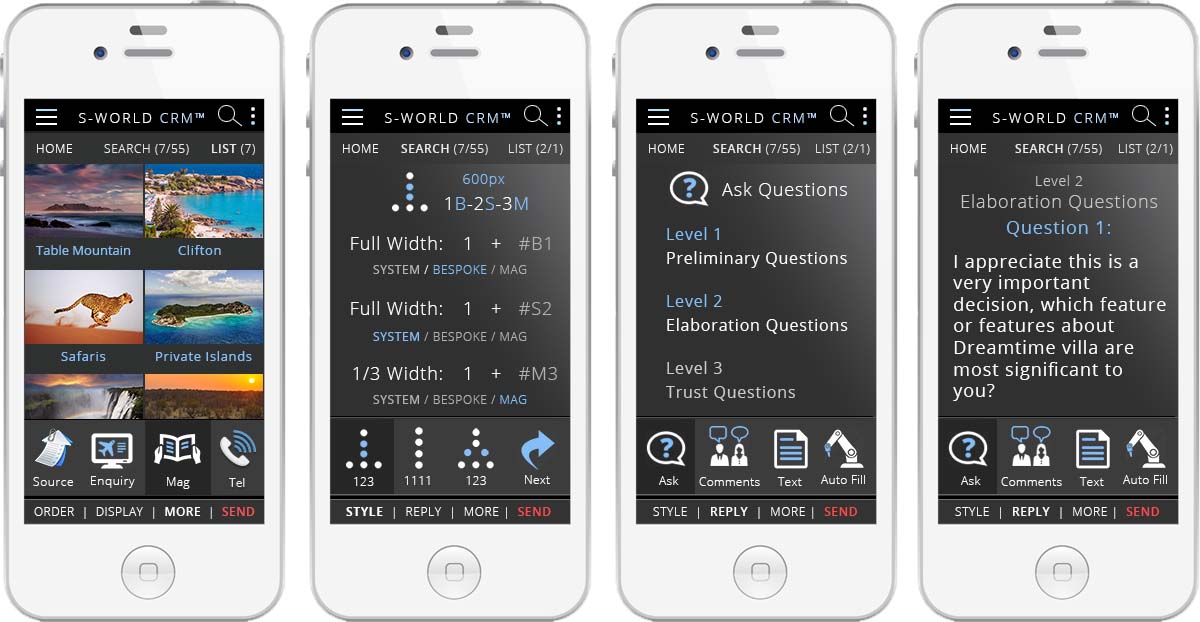-
🧠START
-
0 — ⚛️SIENNA AI — Homepage — Aug 2025⚛️
-
1 — E🌀AGI — 💷⚛️ The Economics of AGI — 2011/2025
-
2 — 🎬The SIENNA Project 😇🛰️ – April 4, 2011
-
3 — 🕵️🎬 Nick Ray Ball — FIRST ONE BACK
-
4 — ⚕️⚛️ GP-AI Gatekeeper 2025
-
5 — ⚛️ Sienna.Gov 🏛️ (2011-2025)
-
6 — ⚛️🚀 The 6 Module Design — 2024/25
-
9 — ⚛️🧠Sienna AI Network FX 🌐💹 — Aug 15, 2025
-
10 — ⚛️ T10T 🛰️ The Ten Technologies
-
0 — ⚛️SIENNA AI — Homepage — Aug 2025⚛️
-
⚛️25
- 💷⚛️ Economic AI
- 🎬🕵️ First One Back – Franchise 📖
- ⚛️👾Microsoft for Startups application
- 🏛️ 👔 UK Government (Gov.uk)
- 🕵️iUK - Innovate UK
-
E🌀AGI
-
E🌀AGI — 💷⚛️ The Economics of AGI
- E🌀AGI — 🌐 2091b) What is Economic AI?💷⚛️ — March 30, 2025
- E🌀AGI — 💷⚛️🌐The Economics of AGI — Foundation 🧱 — May 2, 2025
- E🌀AGI — 💷⚛️🌐 T10T – Laying the Tracks for Macroeconomic AI – May 11, 2025
- E🌀AGI — 💷⚛️🌐 Welcome to: 💷⚛️ The Economics of AGI (In Progress) — May 23, 2025
- E🌀AGI — 💷⚛️🌐 UK Butterfly 🌍🦋 2022 — How to Score a Perfect 4x on the Keynes Multiplier
- E🌀AGI — S🌀ES — $1,039 Trillion Basic — Aug 2021
- E🌀AGI — How Š🌀ŔÉŚ™ Generates US$ 1039 Trillion by 2080 — Aug 2021
- E🌀AGI — 💷⚛️ A More Creative Capitalism — 2016/2022
- E🌀AGI 📜Historical Journey Pages📜
-
E🌀AGI — How to Build an AI Economy
- E🌀AGI — 💷⚛️🌐The Economics of AGI — Foundation 🧱 — May 2, 2025
- E🌀AGI — 💷⚛️🌐 T10T – Laying the Tracks for Macroeconomic AI – May 11, 2025
- E🌀AGI — 💷⚛️🧠Sienna AI – Homepage 9. Network FX – Sam Altman 👨⚖️ $1B Single User Challenge 🏆
- 2091h1)🎙️💷⚛️ How to Build an AI Economy #1 – QuESC Resort Networks, & +50% of Global GDP [21 Aug 2025]
- 2091h2) 💷⚛️ How to Build an AI Economy – Quotes from ‘Empire of AI’ by Karen Hao [25 Aug 2025]
- 2091h3) 🎙️💷⚛️ How to Build an AI Economy – From Villa Secrets to the GP-AI for Private Healthcare [6 Sep 2025]
-
E🌀AGI 📄 87 Quintillion Histories📜
- 2091c1)📄 — 💷⚛️ AI and The 87 Quintillion Histories [9 May 2025]
- 2091c2)📄 — 💷⚛️ Mustafa Suleyman – Breakout – Alpha Go + From 2 to 10 billion petaFLOPs [17 May 2025]
- 2091c3)📄 — 💷⚛️ The 87 Quintillion Histories - Break Out Alpha Go Comparison [17 May 2025]
- 2091c4)📄 — 💷⚛️ The Economics of AGI – Podcast Episode (long write-up) [19 May 2025]
- 2091c5)📄 — 💷⚛️ The Economics of AGI – Something Completely New [18 May 2025]
- E🌀AGI Podcast🎙️ UK Butterfly 2024⚛️
- E🌀AGI📁📄 Economic AI Docs
-
🎬The Sienna Project 🎬 April 4, 2011
-
E🌀AGI — 💷⚛️ The Economics of AGI
-
🧊6M
- 🧊6 Module Designs 🧊🧊🧊🧊🧊🧊
- 🧊Module 1 — The QA ⚛️🔍Quanta Analytica
- 🧊Module 2 — O🌀KRs (Objectives & Key Results)
-
🧊Module 3 — 📧📡🛰️ALL-COMMs — Gatekeeper📱🛡️
-
🧊Module 4 — 🚀S-Web 6 VC AI CMS —Website/App Creator
-
🧊Module 5 — 🧠🔬Nudge-CRM AI — 2016/25
-
🧊Module 6 — The Swapping Menus Function 🔁📑⚛️ (SMF)
-
🛰️T10T
- 🛰️T10T — The Ten Technologies — Homepage
-
T1. S-Web🚀 — Everything Online
-
T2. TBS — Total Business Systems 🌀🏹
-
T3. Network Distribution 🌐💫
-
T4. S-World Film (Content) 🎬📖🎙️
-
T5. VSN 🔮 (Virtual Network)
-
T6. UCS — Games & Simulations 🕹️ 🎮
-
T7. Š🌀ŔÉŚ — Financial Engineering 💵🏗️
-
T8. NetZero DCA Soft 🌍
-
T9. Grand Śpin Networks 🌃
-
T10. S-World AngelWing (AI) ⚛️👾
-
L🏹W
- ⚛️TLS-W🏹 AI Litigation Weapon
- ⚛️TLS-W🏹 — ⚖️ ICP Epsom Lawsuit
- ⚛️TLS-W🏹 — Onedrive 💼📁
- 🕵️🎬 Nick Ray Ball – First One Back
-
⚕️24-23
-
⚕️⚛️ GP-AI Gatekeeper — (March 2023 to) October 2024 to March 2025
- ⚕️⚛️ GP-AI Gatekeeper – 10 OneDrive Folders 📁 ±150 Files 📄📄📄 — Oct 2024 to June 2025
- ⚕️⚛️ GP-AI Gatekeeper 🎬 Part 1 – 💷 The £112 to £147 Billion Economic Gain — 17 Feb 2025
- ⚕️⚛️ GP-AI Gatekeeper 2025 Sienna AI Web page💻🌐 for Sir Keir Starmer — Nov 2024 to Mar 2025
- ⚕️⚛️ GP-AI Gatekeeper 📄🏛️ Complete Innovate UK Competition — 29 Jan 2025
- ⚕️⚛️ GP-AI Gatekeeper – 🏛️ iUK Q4 – Your Idea and Innovation — 21 Dec 2024]
- ⚕️⚛️💷 Economic Growth Gained by Returning 1% of the UK Population Back to Work ✨ — 28 Jan 2025
- ⚕️⚛️ GP-AI Gatekeeper Videos 🎬
- ⚕️⚛️ GP-AI Gatekeeper 🎬 Act 2: ⚕️🕵️ NHS Criminality & The Misdiagnosis Paradox — 19 Feb 2025
- ⚕️⚛️ GP-AI Gatekeeper 🎬 Act 3: The 16 Stage Design – For Sir Keir Starmer — 24 Feb 2025
- 💙⚕️ The Good Doctor App — plus GP-AI Docs — 5 Nov 2024
- ⚛️📂🚀 T1 S-Web 6 VC AI CMS – Stronger UKRI Validation — Feb 9, 2025
-
🎙️Speaker — ⚛️🧠 From Sienna AI to UK Butterfly 2024 — July 2024
- ☆DF🚀68a. Perfect Segment 1 - The ☆DF🚀 PODCAST — 22 July 2024
- ☆DF🚀68b. Perfect Segment 2 - DevOpsOpsOps — 22 July 2024
- ☆DF🚀68c. T3 - 'Everything it takes to make a sale' — 23 July 2024
- ☆DF🚀68d. The SMF Affiliate split error corrected — 23 July 2024
- ☆DF🚀69b2. Virgin LE - Singita - InRes - Wilderness — 20 July 2024
- ☆DF🚀 69b4. ♡♡ THE VIRGIN WINNER ♡♡ — 20 July 2024
- ☆DF🚀69c1. TLS-V1 Voir dire (Jury Select) — 20 July 2024
- ☆DF🚀69e1. A More Creative Capitalism — 21 July 2025
- ☆DF🚀71aa1. Open Source 2 - QA Recruitment — 24 July 2024
- ☆DF71a. Iteration Emoji on DevOps (Self Score) — 28 July 2024
- ☆DF71b. Add DevOps emoji's to Q-Planner — 28 July 2024
- ☆DF71c. DevOpsOpsOps next call Charlize Theron — 28 July 2024
-
🎙️Speaker — ⚛️🧠 From Sienna AI to UK Butterfly 2024 — Jul to Aug 2024
- ☆DF🚀71d. Iteration = Flying☆ B4 Emoji 'Beautiful' — 31 July 2024
- ☆DF🚀71e. ☆DF69e2. Welcome to T4. QA & S-World Film — 31 July 2024
- ☆DF🚀71f.♡ DevOpsOpsOps - Welcome to the party Nick! — 31 July 2024
- ☆DF🚀62b6.♡♡. How OKR DevOps encourages testing — 31 July 2024
- ☆DF🚀71g1.♡ T7. Š🌀ŔÉŚ Financial Engineering & T8. NetZero DCA for David Farley — 31 July 2024
- ☆DF🚀71g2. QA=100% Open Source 3 — 31 July 2024
- ☆DF🚀71g3. 4 Sienna ❤️ Wannabe Sloppy Hacker — 31 July 2024!
- ☆DF🚀71g4. UK Butterfly & OKR DevOps — 31 Jul 2024
- ☆DF71g6. UK Butterfly point & "I hope they're nice to us." — 31 July 2024
- ☆DF🚀72c1. Is SMF collaborative or curled up — 12 Aug 2024
- ☆DF🚀72c5. 25% for QA is Huge & Scoring Hawking's — 13 Aug 2024
-
🎙️Speaker — ⚛️🧠 From Sienna AI to UK Butterfly 2024 — August 2024
- ☆DF🚀72d1.♤ T7. Š🌀ŔÉŚ was the Iteration (some error) — 15 Aug 2024
- ☆DF🚀72d4. Combinatorial & Tests shown in Oculus — 16 Aug 2024
- ☆DF🚀72d5. The Feynmann sum over histories — 16 Aug 2024
- ☆DF🚀72e4. CRM Nudge AI is Tailored to Each Industry — 18 Aug 2024
- ☆DF🚀72e5. Einstein Bohr - M-theory CRM Nudge AI — 18 Aug 2024
- ☆DF🚀72e6. CRM Nudge AI 2018 to 2024 — 18 Aug 2024
- ☆DF72f1. Sienna Ad! – SMF – Hi End Fashion – S-RES (Microsoft, Ketevan Berianidze) — 26 Aug 2024
- ☆DF72f2. T7 Š🌀ŔÉŚ B2B - 8 in Network (some errors) — 28th August 2024
- ☆DF72f2b. Remember the É in Š🌀ŔÉŚ (many errors) — 28 Aug 2024
-
🎙️Speaker — ⚛️🧠 From Sienna AI to UK Butterfly 2025 — Aug 2024 to Aug 2025
- ☆DF72f3. Sienna AI meets Š🌀ŔÉŚ SURH's et al. — 29 Aug 2024
- ☆DF72f3b. 64Cube – Dr no tax – Sienna.gov benefits — 29 Aug 2025
- ☆DF72f4. Š🌀ŔÉŚ – Sienna AI makes more Ŕ than City Sale — 1 Sept 2024
- ☆DF72g1. Sienna AI Ad! – Brinn Tomes – Influences & Cars — 18 Sept 2024
- ☆DF🚀72h1. Sienna AI – É in Š🌀ŔÉŚ – UK Butterfly Fix — 19 Sep 2024
- ☆DF🚀 92c1. From S-Web 6 VC 'Sienna AI' to UK Butterfly — 10 March 2025
- ☆DF🚀 90L1. UKRI is Counterproductive. Scrap It! — 14 March 2025
- 2105e9a1) 🎙️⚛️Sienna AI – Home Page #9. Sam Altman – Build a $1B Company — 7 Aug 2025
- 2105e9a3) 🎙️⚛️ Sienna AI – 9. Network FX – Sam Altman 👨⚖️ $1B Single User Challenge 🏆 #1 — 14 Aug 2025
-
🎙️Spotify — S-Web 6 VC🚀 'SIENNA AI' CMS 🌀 — Apr/May 2024
- 🎙️☆DF🚀 1-18. For David Farley — 13 to 26 April 2024
- ☆DF🚀 19-29 for David Farley — April to May 2024.
- ☆DF🚀 17. The Swapping Menu's Function — 18 April 2024
- ☆DF🚀 18 for Effective Altruists Everywhere — 18th of April 2024
- ☆DF 🚀 Bonus. T2. TLS-W 🏹 & S-Web 6 VC 🚀 AI CMS — April 2024
- ☆DF 🚀 Bonus. The GP-AI — November 2023 to June 2024
- ☆DF🚀 40-49 For David Farley — 13 to 20 June 2024
-
🎙️Spotify — S-Web 6 VC🚀 'SIENNA AI' CMS 🌀 — Jun/Jul 2024
- ☆DF🚀 Bonus. T2. The QA - Quanta Analytica 🌀 (incomplete) — Dec 2023 to June 2024
- ☆DF🚀 Bonus. OKR DevOps 4.6 💡 T2. T4. T6. (incomplete) — July 2023 to June 2024
- ☆DF🚀 Bonus. ALL-COMMs & OKR COMMs [T2+6+10] — 12 Sep 2023 to 23 June 2024
- 1) ☆DF50-52 -🌀T2 QA Quanta Analytica🌀 + NetZero DCA — 20/25th July 2024
- 2) ☆DF54 -🌀OKR DevOps🌀 — 26 June (and days that followed) 2024
- 3) ☆DF55 - 🚀 ReBuild S-Web 5🚀 in Python making Apps and Websites — 29 June 2024
-
🎙️Spotify — S-Web 6 VC🚀 'SIENNA AI' CMS 🌀 — July 2024
- 4) ☆DF56 -🌀CRM Nudge AI🌀 (incomplete) — 4 July 2024
- 5) ☆DF57 - 📡 ALL-COMMs 📡 (very incomplete) — 4th July 2024
- 7) ☆DF59 - 🚀 Summary of 🚀 Sienna AI🌀 (incomplete) — 4th of July 2024
- 8) ☆DF60 - 🌎 64 Reasons Why 4 Elon Musk et al. — 4th July 2024
- 12) ☆DF64 - 🌐 Sienna.gov & UK Butterfly 🌐 — 14th of July 2024
- ⚛️🧠Sienna AI — 6-Modules🧊 Homepage — July 2024
- 📁⚛️🧠 Sienna AI —T10T — Main OneDrive Folder📁
- S-Web 6 VC 🚀 2023 — HOME PAGE — Nov 2023
- ⚛️👾MSE DevOps Stuff 2023
- ⚛️👾MSE DevOps Stuff 2023 (2)
- 📁2015) 📡 ALL COMMs + 💷 iUK Economic AI – Oct 2023
-
⚕️⚛️ GP-AI Gatekeeper — (March 2023 to) October 2024 to March 2025
-
🎬T4
- Technology 4. S-World Film🎬🎙️📖🎧
- 📖🎙️📽️ Nick Ray Ball – 🕵️🎬 First One Back 🎬
-
🕵️🎬 FIRST ONE BACK – 👾🎓Terrifying Lessons in Psychiatry 🔬🧠
- 👾🎓Terrifying Lessons in Psychiatry🔬🧠
- PART 1 — The Couple's Counsellor 👱♀️ 👩❤️👨 💬
- PART 2 — GP-AI Psych ⚛️🧠 — Terrifying Lessons 👾🎓
- PART 3 — The Fraudulent Discharge🕵️📑
- PART 4 — The Irrationally Primed Doctors 🦄🧨👨⚕️
- PART 5 — The Bipolar Myth ☯️🧙
- PART 6 — Criminal Minds 🏴☠️🧠
- PART 7 — Suicide Blonde 💊👱
- PART 8 — ⚛️TLS-W🏹 — LIP AI Litigation Weapon
-
🎙️🕵️FIRST ONE BACK - Gemini Audio Overviews
- 2099n1b4)🎙️🌪️⚛️🏹⚖️TLS-W – Big Pharma Fraud Charges (AZ GSK J&J Pfizer) Gemini Audio 🌪️ [24 June 2025]
- 2099a2) 🎙️⚛️🏹⚖️TLS-W – £157.5m – Cape Villas Lost Revenue 2012-2025 (FV) + (PGR) = £157.5m 🎙️🌪️ – 23 June 2025
- 2100b3b) 🎙️🏹⚕️🧠 Terrifying Lessons in Psychiatry 5 – The Bipolar Myth for Dr Jawad 🎙️🌪️ [16 June 2025]
- 2100f1c) 🎙️🏹⚕️🧠 Expert Medical Opinion – Explaining Non-Psychosomatic Neurology and Central Sensitisation for Dr Jawad 🎙️ [17 June 2025]
- 2099m1b) 🎙️⚛️🏹⚖️TLS-W – List of CPS Criminal Charges (ICP ESH SAB) [2 June 2025]
- 2099a2b4)🎙️⚛️🏹⚖️ How the NHS Stopped Nick Ball’s CapeVillas.com Comeback & Forced Him to Create the TLS-W🏹 [06 July 2025]
- 2099a2b2) 🎙️⚛️🏹⚖️TLS-W – How the NHS's ICP, ESH, & SAB Stopped Nick Ray Ball’s Cape Villas Comeback 2022-2026 🌪️ [05 July 2025]
- 2099a2a2) 🎙️⚛️🏹⚖️TLS-W – £60 Million in Lost Cape Villas Ltd UK Investment – Revenue x12 – 2022-2026 🎙️🌪️ [04 July 2025]
-
🎬The SIENNA Project 😇🛰️ – April 4, 2011
- 🎬The SIENNA Project 😇🛰️ — 4 April 2011
- 🎬🕵️First One Back – The Sienna AI Story 📖 — 28 May 2025
- 😇🌀 🎬 Angel City 5 — The Movie 🎬 — 1 Aug 2017
- 🎬The SIENNA Project 😇🛰️ — The Chaotic Earth Game — October 2011
- 🎬The SIENNA Project 😇🛰️& The Spartan Theory 🛡️📜 — April 2011 & 2021 update
- 🎬The SIENNA Project 😇🛰️ — ⚛️ AI and the Paradox of Trust ♾️ — 29 July 2025
-
🚀22
-
⚛️ The S-World Algorithms | 2011 to 2022
- ⚛️ Part 2 Solo 🚀The S-World Platform — 2014 to 2021
- ⚛️ Part 3 Solo 💷💷 A More Creative Capitalism 🌸 Mar 2016 - 24 Nov 2018
- ⚛️ The S-World Algorithms
- ⚛️ The S-World Algorithms | CONTENTS
- ⚛️ Part 1. The Theory of Every Business | Mar 2011 to June 2013
- ⚛️ Part 2. 🌀 The S-World Platform 🌀 | Mid 2013 to 2022
- ⚛️ Part 3. M-Systems 🕊️ A More Creative Capitalism 🕊️ Mar 2016 - 24 Nov 2018
- ⚛️ Part 4. Š-ŔÉŚ™2021—⌂≥ÉL | 27th Dec 2018 to 9th Apr 2021
- ⚛️ Part 5. The 10 Technologies | Jan 2021 to Current
-
🎬 S-Web 5.1 Video presentaion 2022
- S-Web™ 🎬 1 — The First 10x
- S-Web™ 🎬 2a — The first 100x
- S-Web™ 🎬 2b — Add 70 Product Pages for The First 100x
- S-Web™ 🎬 3 — 2,000x Faster
- PART 2
- S-Web™ 🎬 4a — Luxury Safari.co — Made In 6 Seconds
- S-Web™ 📄 4b — Assign Template to Website (30x) = Beyond 60,000x
- S-Web™ 📄 5 — Beyond 60,000x — Other Systems Created or in Progress
-
⚕️ The S-Web Addendums: 2 — 8 For Peter Theil
- Addendum 2 — S-Web™ 5.0 Network Effects
- Addendum 3 — Branding - The Sienna Project 40 Highly Evolved Concepts
- Addendum 4.01 — S-World UCS™ - One Billion Websites
- Addendum 4.02 — Video Four Alternate Presenation
- Addendum 4.03 — Mithrandir - Proof of Concept - It's Fast
- Addendum 4.04 — Can 60,000x Faster Equal 60,000x Cheaper?
- Addendum 5 — The WordPress Argument
- Addendum 6 — Google Pay in Thier Own Currency
- Addendum 7 — S-World Technology 3 & Sotheby's International Realty
-
⚕️ The S-Web Addendums: 8 — 15 For Peter Theil
- Addendum 8 — T10. S-World AngelWing & The Combinatorial Explosion
- Addendum 9 — Domain Set Up Time-Cost
- Addendum 10 — The Everything System (No Content)
- Addendum 11 — QuESC Votes
- Addendum 12 — S-Web 5.2 The Intern and The Navigation Bar
- Addendum 13 — Zero to One Quotes #1 and Other Ideas
- Addendum 14 — S-Web™ 5.2 for Universities, Authors, Producers and Everyone
- Addendum 15 — Originally from Video 5 - Other Systems Already Creative or in Progress
-
📈 S-Web Business Plan — Q4 2022
- Business Plan Q4 2022
- Contents | Index
- Chapter 1 — Three Introductory Quotes
- Chapter 2 — Scale 1 — From 16 to 1024 S-Web™ Platform Websites.
- Chapter 3 — The S-Web™ 60,000x Videos
- Chapter 4 — The S-World Algorithms — Part 2 — The S-World Platform
- Chapter 5 — Specialize and Scale — Part 1 — The Villa Secrets’ Secret — 2020
- Chapter 6 — Mandate Symmetry
- Chapter 7 — Prestige Marketing and The Estate Agents Pack
-
🎬 S-World Platform Videos — 2016 to 2022
-
🚀 Home Page 2022 — 60,000x Faster
-
🚀 S-Web (60,000x Faster) Spec for Leigh Marie Braswell (Feb 23)
-
🚀 Other Systems - Already Creative or in Progress
-
⚛️ S-World PDF Library — 2011 to 2021
-
⚛️ The S-World Algorithms | 2011 to 2022
-
S🌀RES
-
S🌀RES Books 📖 & 📄 Papers — 2020-2022
- 1171) 📖2. Š🌀ŔÉŚ™ and The City ⌂ Part 2 — Jan to Apr 2021 🌪️
- 1155) 📄3. 64 Reasons Why — Basic — Nov 20-Feb 2021
- 1152b) 📄2. S🌀RES & The City - Summary — Nov 20-Apr 2021
- 1152) 📖2. S🌀RES & The City 'Extra' — Nov 20-Apr 2021 🌪️
- 1151) 📄2. Tax Symmetry - Elevator Pitch — Nov 2020
- 1137) 📄2. Š🌀ŔÉŚ The Monopoly Equation for Founders Fund - Nov 2020
- 1135) 📖2. The How — Š🌀ŔÉŚ & The City — Oct 20 to Feb 2021 ℏ🌪️
-
S🌀RES Books 📖 & 📄 Papers — 2017-2020
- 1135) 📖2. The How — Š🌀ŔÉŚ & The City — Oct 20 to Feb 2021 ℏ🌪️
- 1116) 📖4. 10x Our Future For Peter Thiel — Aug-Sep 2020 ℏ🌪️
- 1111) 📄2. S🌀RES Basic — 23 Jul 2020
- 1098) 📖4. 10x Our Future (Zero to One + 64RW + TGD) — Apr 2020
- 1054) 📖2-3: S🌀RES and 64 Reasons Why + Antitrust — Oct 2020
- 1050) 📖3 — 64 Reasons Why - Summary — Sep 2019 - Mar 2020
- 1026) 📖1+2+3: 1 The What — 2 The How — 3 The Why — June-Nov 2019 ℏ🌪️
- 0991) 📖3. Sixty-Four Reasons Why — 24th Nov 2019 ℏ🌪️
- 0960) 📄 The ŔÉŚ Equation — High-Octane Financial Engineering — Jan 2019
- 0859 📄 The ŔÉŚ Equation - Ŕevenue x Éfficiency x Śpin — Oct 2018
- 0844) 📖1. A More Creative Capitalism (Complete) — Oct 2018 ℏ🌪️
- 0668) 📄 MARS Resort One - The Return of ŔÉŚ — Oct 2017
-
S🌀RES 2021
-
🏛️ The Republican — S🌀RES Related — For Peter Thiel
- FF2. Š-ŔÉŚ™2021—⌂≥ÉL — The T7. Monopoly Algorithm
- FF1. 10x Our Future — Š-ŔÉŚ™2021—⌂≥ÉL.
- FF5 — S🌀RES — Taking Malawi from Zero to One % of GDP
- 10x Our Future — Taking Malawi from Zero to One % of GDP by 2080
- SuEc 4 — 10x Our Future — For Peter Thiel — Aug 2020
- The S-World Algorithms for Hannah Fry
- The S-World Algorithms — Set 42 — 10x Our Future
- S🌀RES Monopoly Equation — For Erin Gleason Lane — Nov 2020
- SW Alg. 44 – Supereconomics Book IV: 10x Our Future – Sep 2020
- The ŔÉŚ Equation — High-Octane Financial Engineering — 2019
-
50 Š🌀ŔÉŚ™ Videos and Essays
-
S🌀RES Podcast 2024
-
S🌀RES — 2011-2021 — Nick Ray Ball
-
The S-World PDF Library, Platform and Š🌀ŔÉŚ™ – 2011-2022
-
S-🌀RES - MARS Resort One for Elon Musk - 2017
- S🌀ES — $1,039 Trillion Basic — Aug 2021
- S🌀RES 2019
- S🌀RES 2016-2018
-
S🌀RES Books 📖 & 📄 Papers — 2020-2022
-
⚛️21-16
-
💷💷 A More Creative Capitalism 🌸
-
⚛️2018 - Help I need content!
- ⚛️2017
- ⚛️2016 — From American Butterfly to M-Systems
-
💷💷 A More Creative Capitalism 🌸
-
🚀17-14
- 🚀 The S-World Platform — 2014/16
-
🚀S-Web 3 — Cape Town Luxury Villas — 2014/15
- 🚀 S-Web 3 — #1, #2, #3, and #5 in Google — March 2014
- 🚀 S-Web 3 — Generates $250,000 in booking requests in first month — March 2014
- 🚀 S-Web 3 — 8 Villa Mandates Generates $112,000 PA — 2014
- 🚀 S-Web 3 — Franchise Marketing Plan — Feb 2014
- 🚀 S-Web 3 — 135 different "top 3" search position on Google Search — March 2014
- 🚀 S-Web 3 — Each Villa has a particular points score, made from its attributes — 2014
- 🚀 S-Web 3 — Marketing Reports — Jan to March 2014
- 🚀 S-Web 3 — Innovations — 2014
-
Chapter 2. The Villa Secrets Network
- Chapter 1. Technology Introduction
- Chapter 3b. Mandates, Mandates, Mandates
-
Chapter 4. S-Web CDS™ (Content Delivery System)
-
Chapter 6. S-World CRM-Nudge-AI™ Agent’s Assistant 🚀
-
Chapter 9. S-World TBS-CC — The Company Controller 🚀
-
Chapter 10. UCS Hawthorne 🚀
- Other Chapters
- Summary & 4-year Financial Forecast — 2017 to 2020
-
Villa Secrets — Market Share — 2016 & 2020
-
Experience Africa — October 2016
-
0647) 📖 S-Web 🚀 The Villa Secrets' Secret — 2000 to 2017
- 🚀 S-Web Websites
-
🦋13-11
-
🌐💷⚛️ www.S-World.biz — March 2011to April 2012
- 🚀💷⚛️ "The Spartan Theory" All Chapters Index — Mar 2011 to May 2012
- 🚀Sienna Software — S-Web Business Plan for Virgin — March 2011
- 🎬The Sienna Project🎬 "It was inevitable that software becomes self aware — April 2011
- 🚀The SpartanTheory — ”The New 21st Century Experience Economy”— April 2011
- 🚀The Google Proposal — S-World Virtual Network — June 2011
- 🚀Facebook Proposal 1 — Virtual Network — July 2011
- 💷⚛️Saving Greece — New Sparta City — Sep 2011
- 🚀Facebook Proposal 2 — Facebook Travel — Nov 2011
- ⚛️ EEE — The Economy for the next 14 Billion years — Nov 2011
- ⚛️The Beautiful Butterfly Effect — What if God were board? — Nov 2011
- 🌎🦋 American Butterfly — 💷⚛️Cities of Science — Dec 2011
-
🌎🦋 AB 1-4 — 2011-2012 Highlights
- 🌎🦋 American Butterfly 1 - The Theory of Every Business
- ⚕️ AB1 - Ch3. SURHs & Spatan Contracts
- ⚛️ AB 1-Ch 8. S-World UCS - Universal Colonisation Simulator
- ⚛️ American Butterfly 2. Quantum Economics
- ⚛️ AB 2: QuESC & PQS - Predictive Quantum Software
- ⚛️ AB 2-Ch1. The Entangled Butterfly
- ⚛️ American Butterfly 3. The Network on a String
- 🌍 AB 3 - Ch 7. Angel POP - Global Benefits
- ⚛️AB 3-Ch3. The RES Equation
- 🦋American Butterfly 4. The Butterfly
- Original Homepage (PDFs) - The Theory of Just About Everything
- 🌎🦋American Butterfly 1. 💷⚛️— Apr 2012
- 🌎🦋 American Butterfly 2. ⚛️— Oct 2012
- 🌎🦋 American Butterfly 3. ⚛️— Dec 2012
- 🌎🦋 American Butterfly 4. — April 2013
-
🌐💷⚛️ www.S-World.biz — March 2011to April 2012
-
🎬
- 2025 — ⚕️⚛️ GP-AI Gatekeeper
- 🎥 First One Back — 2024
-
⚛️🚀 The Sienna AI Ad! 🎬 — 23 July 2024
-
🚀 S-Web 5 Videos — 2019/22
- 🚀 S-Web 5.1 Video 1 — The First 10x — 02m:35s - 9th Feb 2022
- 🚀 S-Web 5.1 VIDEO 2a — The first 100x — 16m:05s - 16th Feb 2022
- 🚀 S-Web 5.1 VIDEO 2b — Add 70 Product Pages for The First 100x — 07m:12s - 3rd March 2022
- 🚀 S-Web 5.1 Video 3 — 2,000x Faster — 05m:32s - 7th March 2022
- 🚀 S-Web 5.1 Video 4a Luxury Safari.co — Made In 6 Seconds — 20m.38s - 23 Aug 2022
- 🎥105) S-Web 5 — S Web.org, VillaSecrets.com & Cape Villas.com | 8★ | T1 | 21m.37s (Mar 14, 2021)
- 🎥114a) S Web 2000-2021 — Introduction and History | 9★ | T1 | 5m.33s (Feb 9, 2021)
- 🎥111) MyClient — MyWebpage — S-Web 5 meets the S-World TBS™ | 9.5★ | T1 T2 T3 | 2m.57s (Jan 18, 2020)
- 🎥86) VillaSecrets.com/Nicks-Suggestions (Salespersons Tutorial) | 8★ | T1 T3 | 1m.55s (Mar 17, 2019)
-
🚀 S-Web 4 — 2017
- 🚀🚀🚀 ±150 — S-Web & S-World Platform Videos — 2015/21
- 🎥50) Villa Secrets & Cape Town Luxury Villas, Financial Forecast | 8 | T1 T2 T3 | 13m.35s (Jan 11, 2017)
- 🎥62) Villa Secrets Magazine and Article CMS - The First 1000x (approx.) | 9★ | T1 T3 | 3m.36s (Apr 29, 2017)
- 🎥63) 2. Villa Secrets My List and My Website | 8.5★ | T1 T2 T3 | 3m.21s (Apr 30, 2017)
- 🎥64) 3. Villa Secrets - S Web™ CDS (Content Delivery System) | 8★ | T1 T2 T3 | 12m.13s (Apr 30, 2017)
- 🎥66) My List / My Pitch / My Sales Tools | 8.5★ | T1 T2 T3 | 2m.37s (May 6, 2017)
- 🎥67) Presenting S-Web CDN™ (Content Delivery Systems) | 8.5★| T1 T2 T3 | 34m.49s (May 7, 2017)
- 🎥68) Villa Secrets Scenario 7.12c Forecast Phase 1 | 8★ | T3 | 25m.40s (Jul 14, 2017)
- 🎥74) New Cape Villas website seen on Villa Secrets | 8★ | T1 | 14m.50s (Jan 4, 2018)
-
🚀 S-Web 3 — 2015/16
- 🚀🚀🚀 ±150 — S-Web & S-World Platform Videos — 2015/21
- 🎥7) Divergent AI CRM (12 to 14) Sienna-bot AI, Hospitality & Live Chat | 8★ | T1 T2 | 30m.56s (Feb 15, 2016)
- 🎥8) Ex Africa, Projections & Tutorial Game | Divergent CRM (15 to 17)| 8★ | T1 T3 T5 T6 | 37m.20s (Feb 18, 2016)
- 🎥27) Villa Secrets Cape Town ‘Real Estate Licence’ opportunity | 7★ | T3 | 56m.33s (Sep 17, 2016)
- 🎥35) Villa Secrets Cape Town Rentals - 3 Year Business Plan and Forecast | 9★ | T3 | 8m.08s (Oct 11, 2016)
- 🎥41) Villa Secrets Web Framework - Website Template | 8★ | T1 | 3m.11s (Nov 15, 2016)
- 🎥42) Villa Secrets Company Structure, International Expansion and Experience Africa | 8★ | T3 | 3m.34s (Nov 15, 2016)
- 🎬📜The Sienna Project — 2011
- Contact Us
- Login


.jpg)






 (630KB).jpg)

.jpg)





